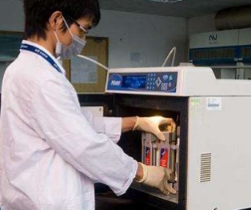
Tel :18138443506
Phone :13798439478
Email :mammon.xu@zhixin-cert.com
Addr :Floor 3, No. 5, Shanglian New Village, Shangcun Community, Gongming Street, Guangming District, Shenzhen (Chuangxin Office Building)

Toxic and harmful substances detection
Toxic and harmful substances refer to substances that can cause disease or reduce health status when human beings are exposed to them under production conditions or in daily life. The management and control of toxic and harmful substances shall be carried out through testing to ensure that the purchased raw materials and processed products can meet the environmental protection requirements without toxic or low toxic substances and the environmental protection laws and regulations of various countries, so that the products can enter the domestic and foreign markets and meet the customer requirements and the trend of environmental protection development.
Key detection contents of toxic and harmful substances:
RoHS/REACH/SVHC/PoHS/WEEE/testing, antioxidant testing, flame retardant testing, mildew inhibitor testing, ultraviolet absorbent testing, phthalate testing, polycyclic aromatic hydrocarbons (PAHs) testing, perfluorooctane sulfonyl compounds (PFOS) testing, asbestos testing, perfluorooctanoic acid and salts (PFOA) testing, toys 19 heavy metals testing, VOC testing, azo testing, COD testing, etc.
Application fields of toxic and harmful substances detection:
Electronic and electrical products Food and contact materials Toys and children's articles
Clothing/bags/footwear, automotive materials and parts, metal minerals
Daily consumer goods of petrochemical polymer materials
Packaging materials, building materials/decorative materials, water quality, etc
Toxic and harmful substances:
RoHS 2.0 Directive 2011/65/EU
Restricted substances and limit requirements
Substance limit Substance limit
Lead (Pb) 0.1% PBDEs 0.1%
Cadmium (Cd) 0.01% di (2-ethylhexyl) phthalate (DEHP) 0.1%
Mercury (Hg) 0.1% Butyl benzyl phthalate (BBP) 0.1%
Hexavalent chromium (Cr (VI)) 0.1% Dibutyl phthalate (DBP) 0.1%
Polybrominated biphenyls (PBBs) 0.1% Diisobutyl phthalate (DIBP) 0.1%
Other consumer goods:
REACH Regulations British Standards Institution (BS EN71)
CPSC China National Toy Safety (GB 6675)
American Society for Testing and Materials (ASTM F963) Limit of Harmful Substances in Chinese Toy Coatings (GB 24613)
Food and Drug Administration (FDA) food contact materials
Consumer Product Safety Standard for Children's Jewelry (ASTM F2923) Ceramic Products
EU Toy Safety Directive (2009/48/EC) Light Industrial Products
European Union Safety Standard for Toys (EN71) Household Products
International toy safety standard (ISO 8124) Student supplies
Japanese Toy Safety Standard (ST2012) Textiles, leather and footwear: Oeko Tex Standard 100, GB18401, ASTM, AATCC, ISO, EN, JIS and other standards
Japanese Food Hygiene Law (JFSL)
Other chemical tests:
Phthalate organotin (MBT.DBT, TBT, TPT etc.)
Titrimetric analysis of polycyclic aromatic hydrocarbons (PAHs)
Detection of various anions and cations of halogen (F/Cl/Br/I)
PH value of azo compound (Azo)
Nickel Release Ash
Bisphenol A conductivity
Tetrabromobisphenol A and other organic bromine compounds (TBBP-A) ELV
Formaldehyde TVOC and VOC
Alkylphenol and alkylphenol ethyl oxide (NP, NPEO, OP, OPEO) Others
Toxic and harmful substances testing items:
1. RoHS
(1) Test items: lead, cadmium, mercury, hexavalent chromium, PBBs of polybrominated biphenyls, PBDEs of polybrominated diphenyl ethers;
(2) Detection field: single product unit or multi position detection, whole machine detection (such as mobile phone, computer and other overall detection).
2. REACH regulations (SVHC detection of REACH substances of high concern)
(1) See the list of SVHC candidate substances in the first to fifteenth batches for details
(2) Testing field: electronic and electrical products, toys, textiles, furniture, automobiles and spare parts and other products exported to the EU.
3. Polycyclic aromatic hydrocarbons (PAHs)
(1) Test items: acenaphthene, acenaphthene, anthracene, benzo (a) anthracene, benzo (b) fluoranthene, benzo (j) fluoranthene, benzo (k) fluoranthene, benzo (ghi) perylene (binaphthylene), benzo (a) pyrene, benzo (b) pyrene, benzo (a, n) anthracene, fluorene, indene (1,2,3-cd) pyrene, naphthalene, phenanthrene, pyrene;
(2) PAHs test method: ZEK 01.4-08, 18 PAHs of German consumer goods; National and international standards;
(3) Detection field: electronic and electrical products, rubber and plastic products, paint coating products, packaging materials, toys, container materials, leather textile products, wood products, etc.
4. VOC
VOC, namely volatile organic compounds, has a great impact on human health. When the VOC in the room reaches a certain concentration, people will feel headache, nausea, vomiting, fatigue, etc. in a short time. In severe cases, people will have convulsions, coma, and will harm the liver, kidney, brain and nervous system, causing memory loss and other serious consequences.
(1) Types (including, but not limited to, the following types): cyclohexanone, isophorone, methanol, ethanol, phenol, ethyl acetate, benzene, n-butanol, methyl isobutyl ketone, n-butyl acetate, xylene (o, m, p), toluene, styrene, 1,2-dichlorobenzene, acetophenone, methyl ethyl ketone, isopropanol, dichloromethane, trichloroethylene, ethylbenzene, n-hexane, 2-methoxyacetic acid ethyl ester
(2) Voc testing scope: automobile industry, textile industry, toy industry, tobacco industry, furniture decoration materials, electronic and electrical industry, printing industry, etc.
5. o-benzene (6P, 16P, 22P) plasticizer
6P Category: Diisononyl Phthalate (DINP), Di-n-octyl Phthalate (DNOP), Diisodecyl Phthalate (DIDP), Bis - (2-ethylhexyl) Phthalate (DEHP), Dibutyl Phthalate (DBP), Benzylbutyl Phthalate (BBP)
Note: It is mainly used in plastics as an additive in building materials, furniture and equipment, textiles, food packaging, etc.
6. Asbestos
Asbestos is recognized as a harmful substance by the international medical community, which can cause chronic respiratory diseases. Long term exposure to asbestos can cause lung cancer, mesothelial cancer of the pleura and peritoneum, and various malignant tumors.
(1) Scope of asbestos testing:
a. Fire fighting equipment such as fire blanket/work clothes/gloves;
b. Sheath insulation and insulating materials for high-temperature equipment;
c. High temperature pipes, such as smoke exhaust pipe/steam pipe, shall be insulated with protective layer;
d. Floor, plate, spraying insulation wall and ceiling insulation materials;
e. Insulation materials of electrical equipment (such as cables, circuit breakers and fuses);
f. Gaskets of equipment and pipelines, wear-resistant materials of braking system;
g. Gland packing, concrete for passive fire protection system, etc.
(2) Asbestos testing items: asbestos content in air, asbestos content in materials, asbestos content in mixed materials, asbestos testing in other fields, etc.


Service Hotline
18138443506
13798439478